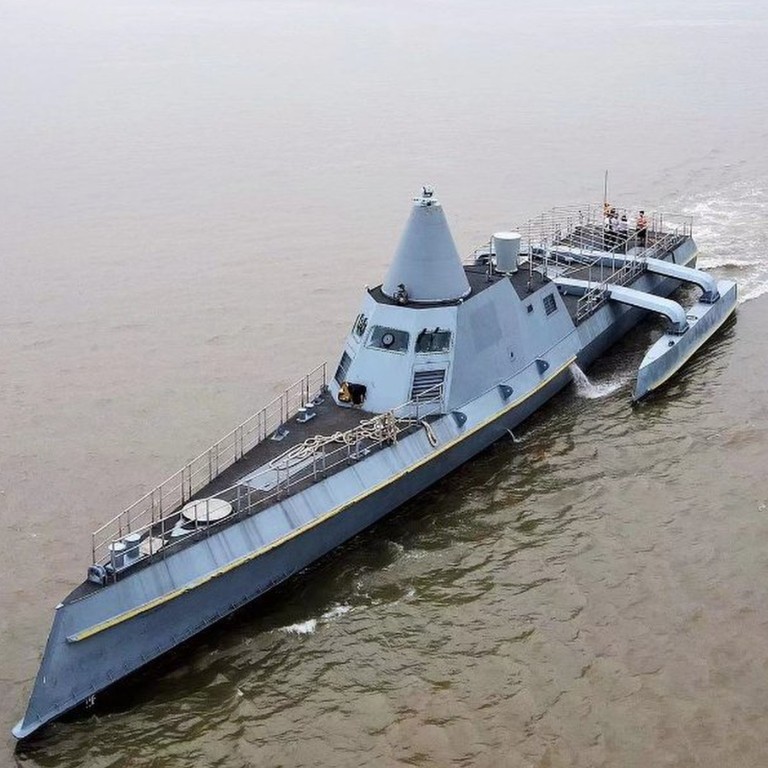
China’s AI drone vessel takes maiden voyage, passes first sea trial
- The unnamed USV ‘meets expectations’ in 3-hour testing offshore of Zhoushan in Zhejiang province
- In appearance the vessel is a hybrid of the US destroyer Zumwalt and its Sea Hunter drone ship
The 200-tonne unmanned surface vessel (USV) – which looks like a hybrid of the US Zumwalt-class destroyer and the Sea Hunter drone ship – completed its three-hour maiden sea voyage offshore of Zhoushan, in the eastern province of Zhejiang.
Beikun’s head Mu Haifang said the USV was put through two set-up routes and collected data as predetermined, according to Zhoushan Daily.
The vessel is capable of a maximum speed of 20 knots and can operate normally in sea state 5 – with long and moderate waves – and sail safely in the “rough” sea state 6, Mu said.
“Its most distinctive feature is its artificial intelligence cabin with autonomous navigation technologies, and all parts on the boat are fully made in China,” he told the newspaper.
The vessel has already been through 30 trials covering 1,000 nautical miles on Lake Poyang since its unveiling in August 2019 in Jiujiang in Jiangxi province. The next step will be to conduct collision avoidance tests, the company said.
While the unnamed USV bears a significant resemblance to the US Navy’s most advanced stealth destroyer USS Zumwalt – most notably, its wave-piercing nose, tumblehome hull shape and boxy superstructure – there are also differences.
In size, the Chinese boat matches the US Navy’s Sea Hunter, the world’s largest USV, at 40 metres long and 13 metres wide, with a displacement of 145 tonnes, compared to the Zumwalt’s 190 metres by 25 metres and 15,000-tonne displacement.
China’s USV also has a trimaran at its stern, a design feature first seen on the Sea Hunter, which has been in trials since its launch in 2016. In a 2018-19 trial, it sailed autonomously from San Diego in California to Hawaii’s Pearl Harbour and back, in a round trip of more than 8,300km (5,200 miles).
China’s military looks for new drones, intelligent vehicles for logistics
The US vessel was developed primarily for anti-submarine warfare, but it could also be fitted for electronic warfare or simply to act as a decoy.
The Chinese USV’s manufacturer did not specify its intended use, but said it was designed to achieve the goals of high seaworthiness cruising, low noise, intelligence, stealth, as well as unmanned and autonomous sailing, according to the newspaper report.
“At present, the unmanned boat is sailing autonomously in relatively open waters, and there is still some distance to go before it reaches the goal of high-speed autonomous navigation,” Mu said.


